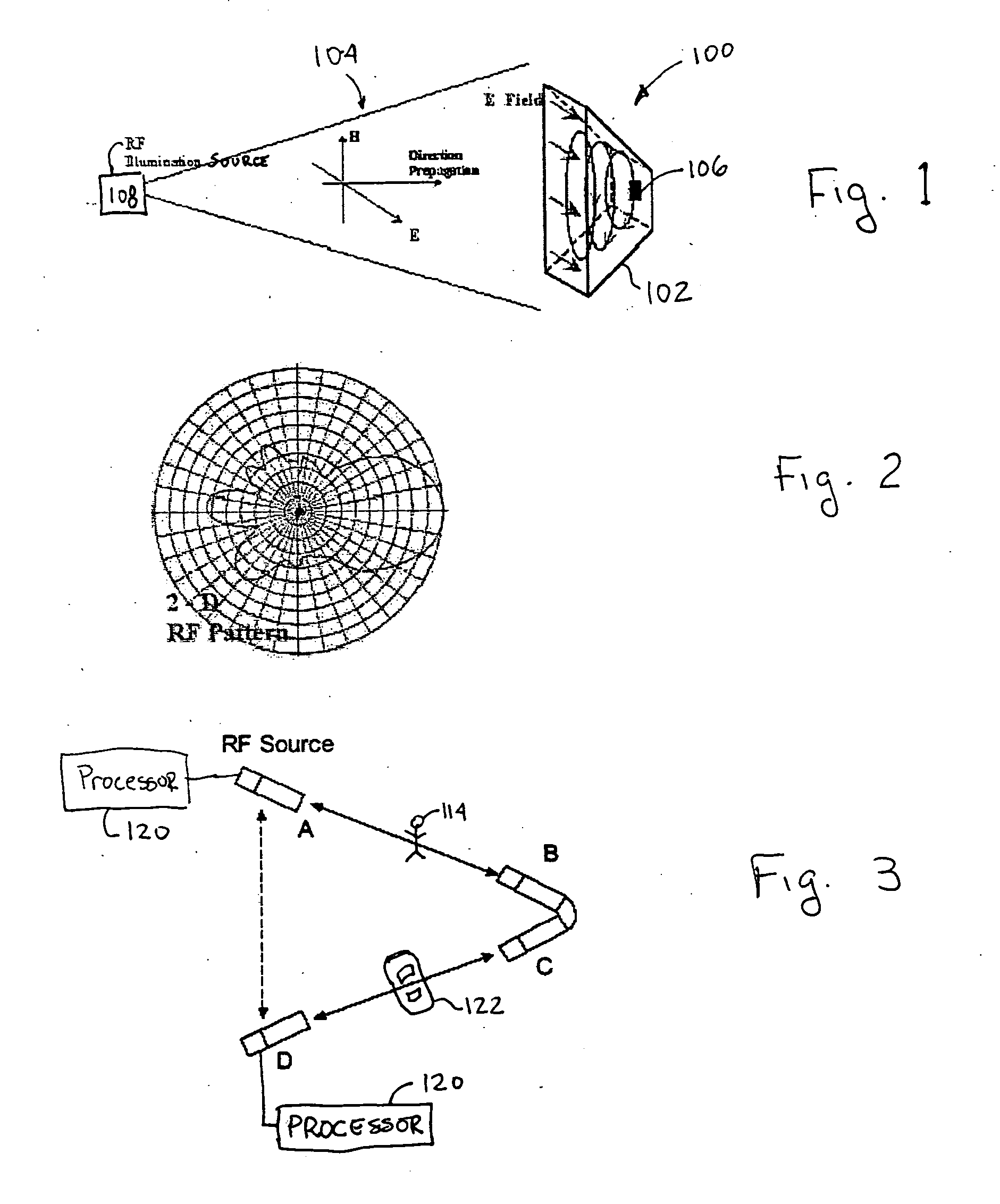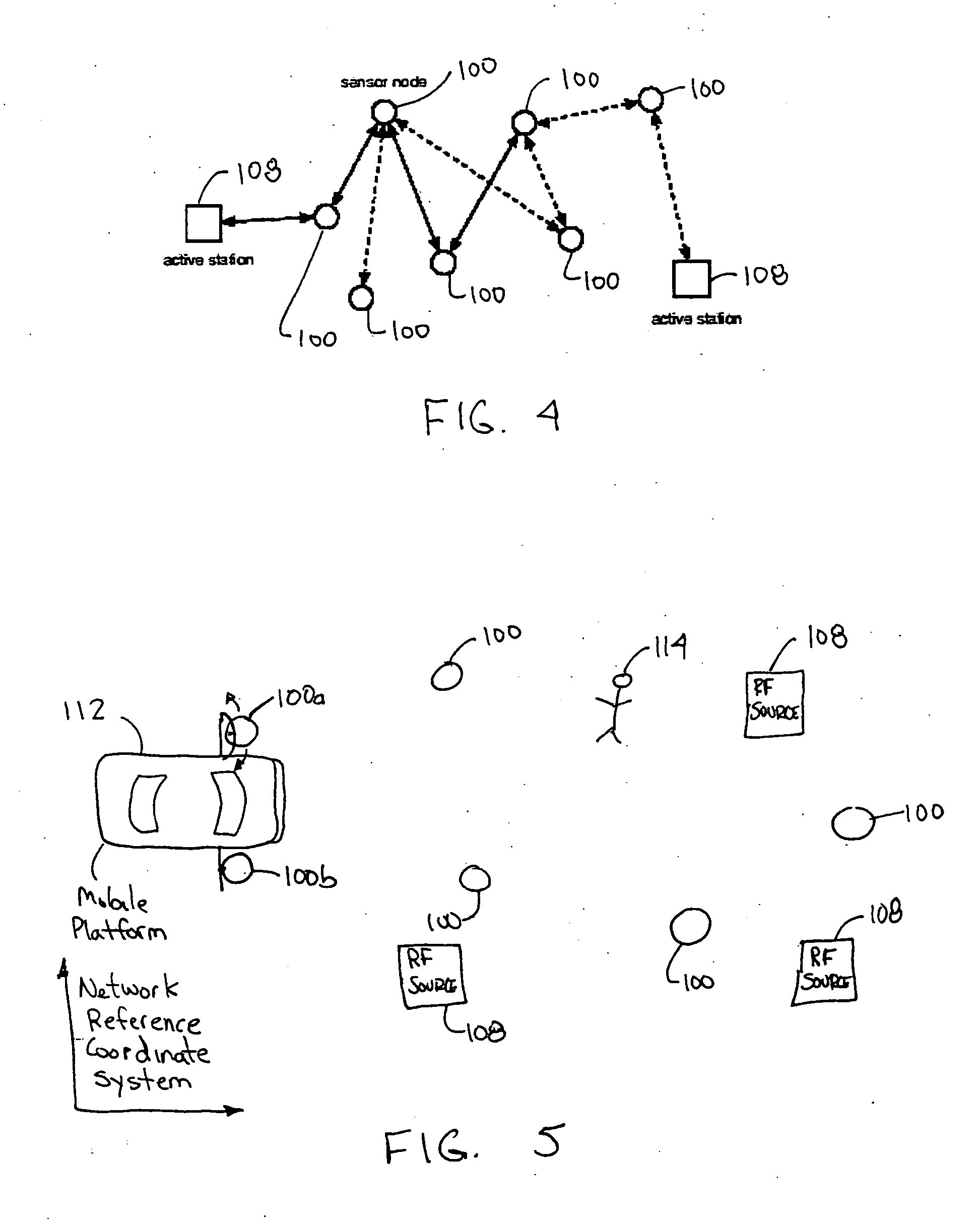Wide-area intruder detection and tracking network
a technology of intruder detection and tracking network, applied in direction finders using radio waves, navigation instruments, instruments, etc., can solve the problems of insufficient signal-to-noise ratio of these sensors, inability to cover distances measured in kilometers rather than tens of meters, and short sensing range of these sensors
- Summary
- Abstract
- Description
- Claims
- Application Information
AI Technical Summary
Benefits of technology
Problems solved by technology
Method used
Image
Examples
Embodiment Construction
[0031] The present invention discloses a novel radio frequency (RF) waveguide sensory system for wide-area intruder detection and tracking. Although other types of delivery systems are possible, such as a manual deployment, a projectile-based delivery system is preferred, particularly where the wide-area to be monitored is a hostile territory or area or buildings contaminated or suspected of being contaminated with agents such as chemical, biological and radiative agents. Projectile delivery systems for the novel RF waveguide sensors disclosed herein are disclosed in co-pending U.S. patent application Ser. No. 10 / ______ (attorney docket 16978), the disclosure of which is incorporated herein in its entirety by its reference.
[0032] The RF waveguide sensors disclosed herein are capable of making the angular measurements directly. The RF waveguide sensors 100 use a combination of sectoral horn or other similar highly directional waveguide antenna horn 102, hereafter called “waveguide” ...
PUM
 Login to View More
Login to View More Abstract
Description
Claims
Application Information
 Login to View More
Login to View More - R&D
- Intellectual Property
- Life Sciences
- Materials
- Tech Scout
- Unparalleled Data Quality
- Higher Quality Content
- 60% Fewer Hallucinations
Browse by: Latest US Patents, China's latest patents, Technical Efficacy Thesaurus, Application Domain, Technology Topic, Popular Technical Reports.
© 2025 PatSnap. All rights reserved.Legal|Privacy policy|Modern Slavery Act Transparency Statement|Sitemap|About US| Contact US: help@patsnap.com



